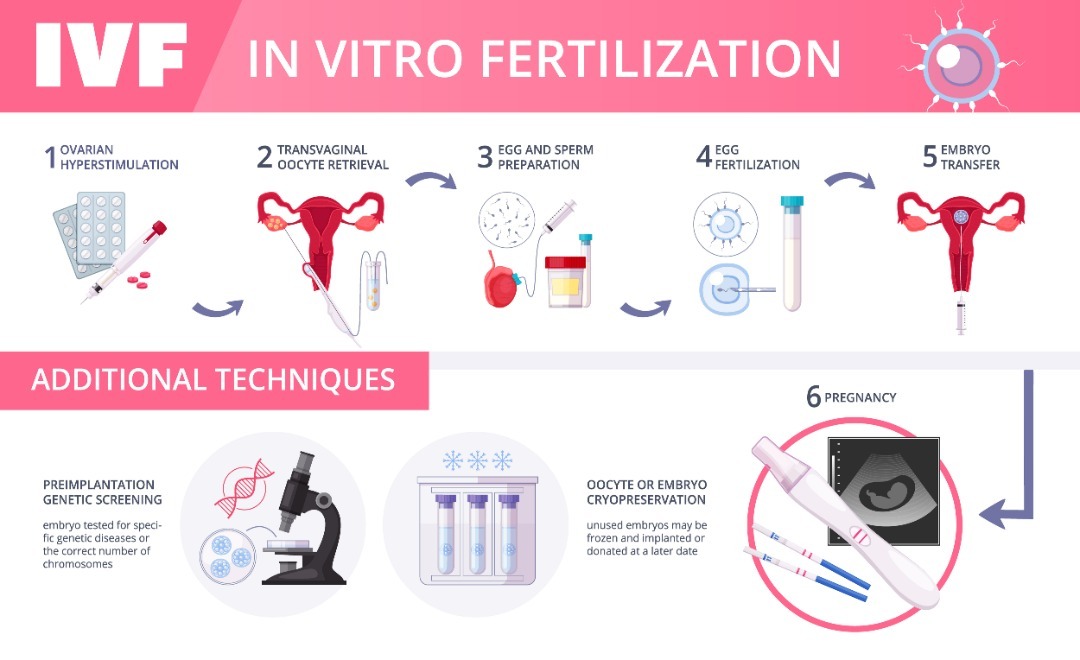IVF Process Step-by-Step

Step 1: First Appointment
At your first visit, your medical history and all previous investigations and treatments will be reviewed and we will provide preliminary advice about your treatment options.
Step 1: First Appointment
Step 2: Pre-treatment consultation
If you have been planned for IVF, you will meet again with your fertility specialist, confirm your treatment plan, have any questions answered and sign the relevant consent forms.
Step 2: Pre-treatment consultation
Step 3: Treatment begins
Your fertility nurse gives you the medication you need, explains the treatment cycle timeline, and shows you how to self-administer the medication injections. We recommend both you and your husband attend this appointment.
Step 3: Treatment begins
Step 4: Treatment monitoring
Throughout your cycle, regular ultrasounds is important to measure the size and number of your ovarian follicles to determine the appropriate time for egg collection.
Step 4: Treatment monitoring
Step 5: Trigger injection
Once you have the optimum number and size of follicles, we will plan your egg collection. You’ll have a trigger injection and the operation for egg collection will occur 36 to 38 hours later.
Step 5: Trigger injection
Step 6: Egg collection in day surgery
Egg collection is undertaken in day surgery under light general anaesthesia. You will be at the hospital for about 4 hours and will need someone to drive you home afterwards. While your husband will need to provide a fresh semen (sperm) sample on the same morning for your egg fertilization process.
Step 6: Egg collection in day surgery
Step 7: Egg fertilization
Collected eggs are taken to the laboratory and placed in culture medium to prepare them for fertilization later that day. In IVF, prepared sperm and eggs are placed together in a dish where fertilization occurs. In ICSI, an individual sperm is selected by a highly experienced embryologist, and, under very delicate microscopic control, the egg is injected with this single sperm.
Step 7: Egg fertilization
Step 8: Embryo development
The egg and sperm are then placed in individual incubators at 37 degrees to mimic the temperature of the human body. The next day, embryologist will examine the eggs to determine if fertilization has occurred, and will call you to advise you of the development of the embryos.
Step 8: Embryo development
Step 9: Embryo transfer
Embryo transfer is a simple day surgery procedure and usually takes place three to five days after the egg collection. The embryos are transferred into the uterus through a very fine catheter passed through the cervix, a procedure similar to a pap smear.
Step 9: Embryo transfer
Step 10: Embryo freezing
Any extra embryos not used during a treatment cycle that are suitable for freezing can be stored for the future.
Step 10: Embryo freezing
Step 11: Pregnancy test
Your nurse will organize an appointment for you to have a blood test two weeks after the embryo transfer. If the pregnancy test is positive, we will arrange an ultrasound scan approximately two weeks later.
Step 11: Pregnancy test